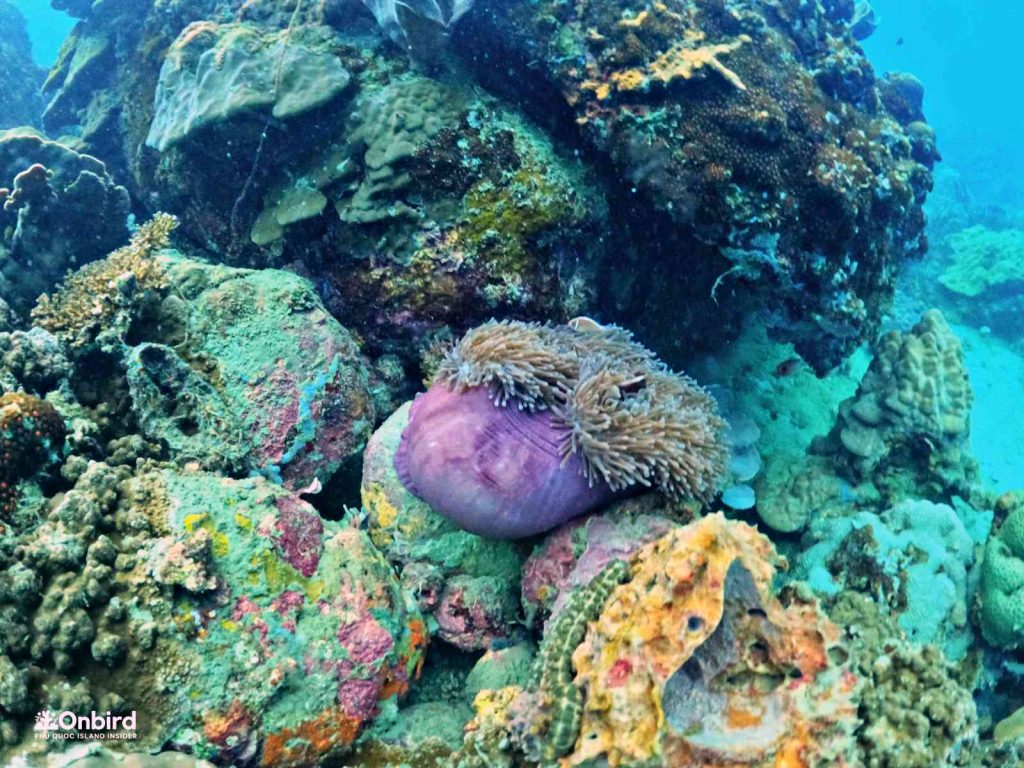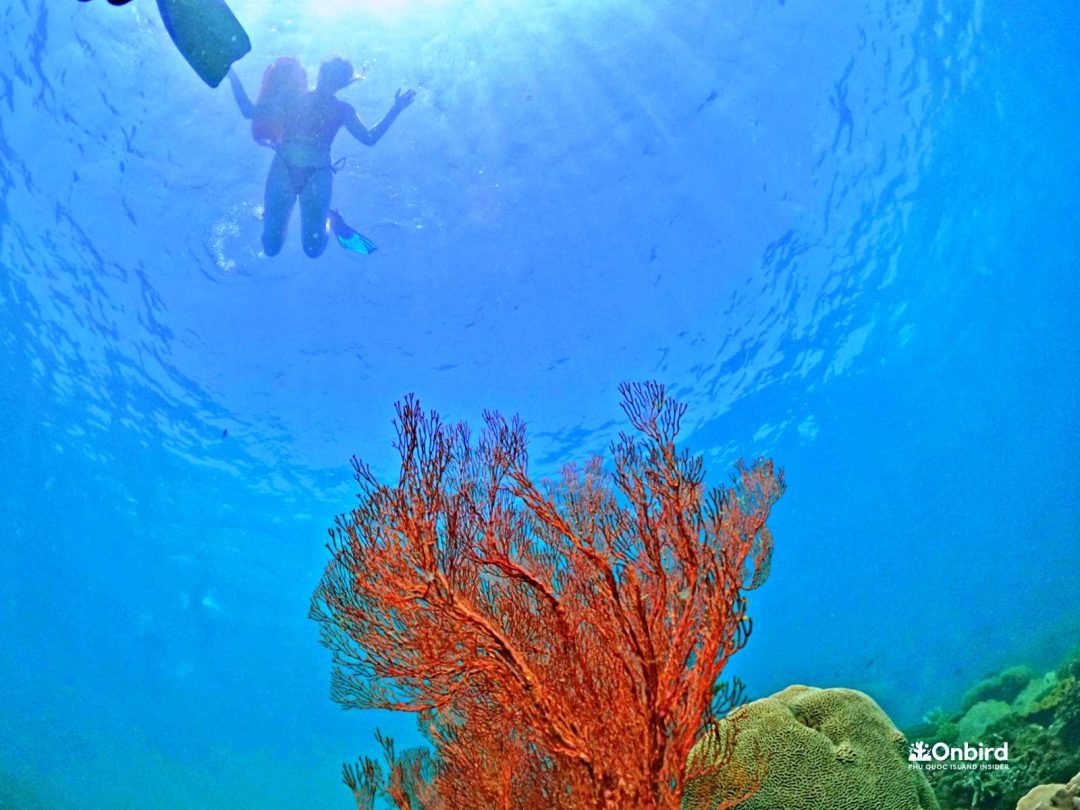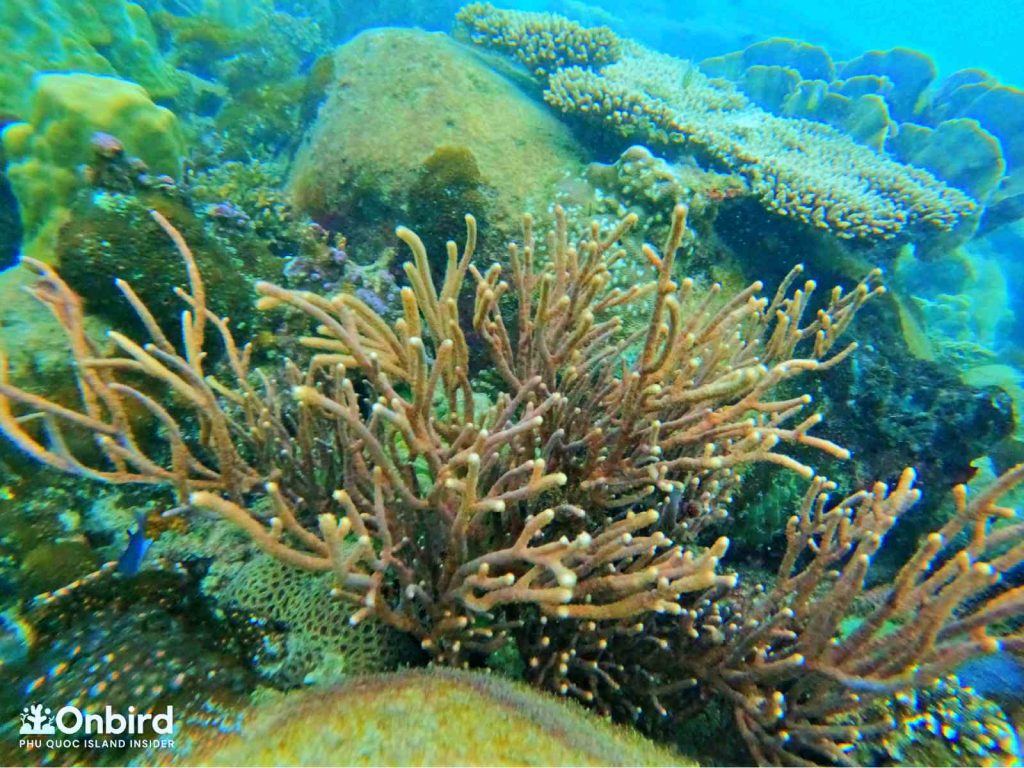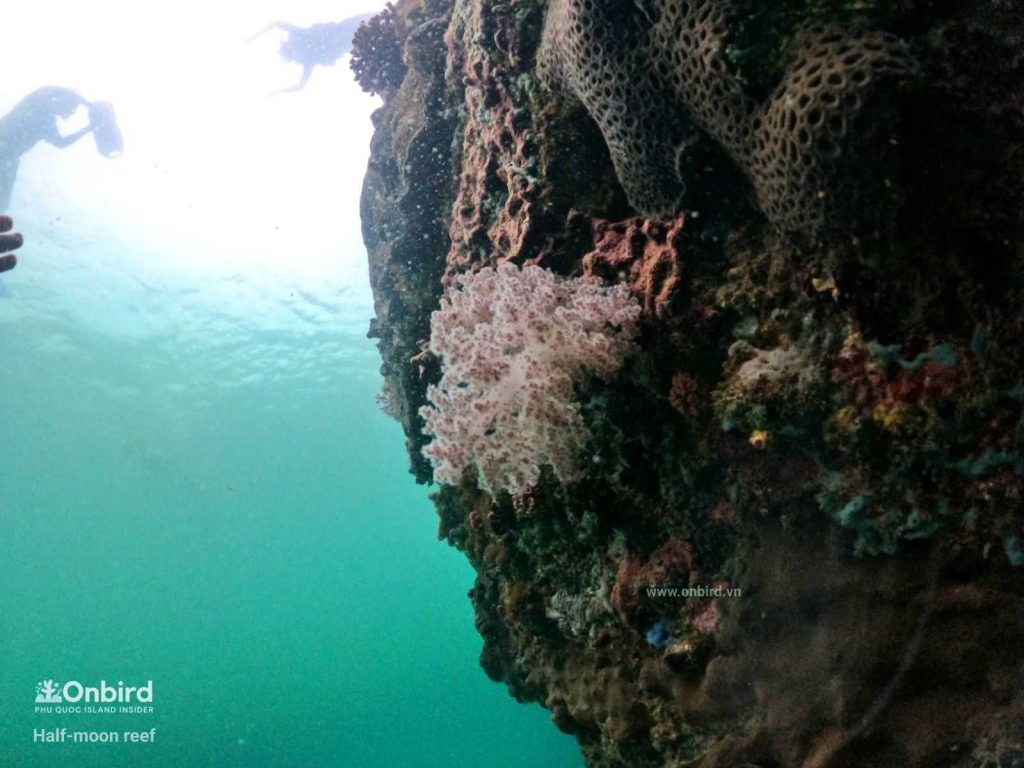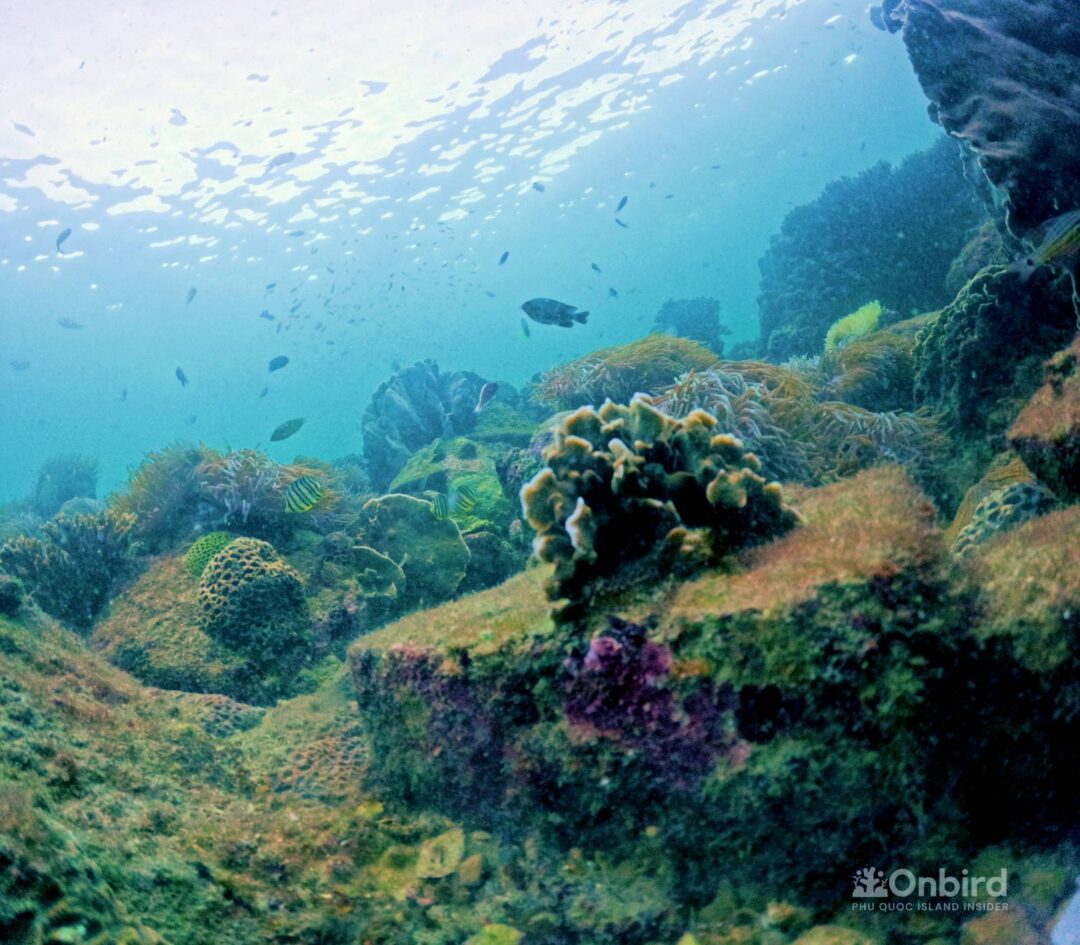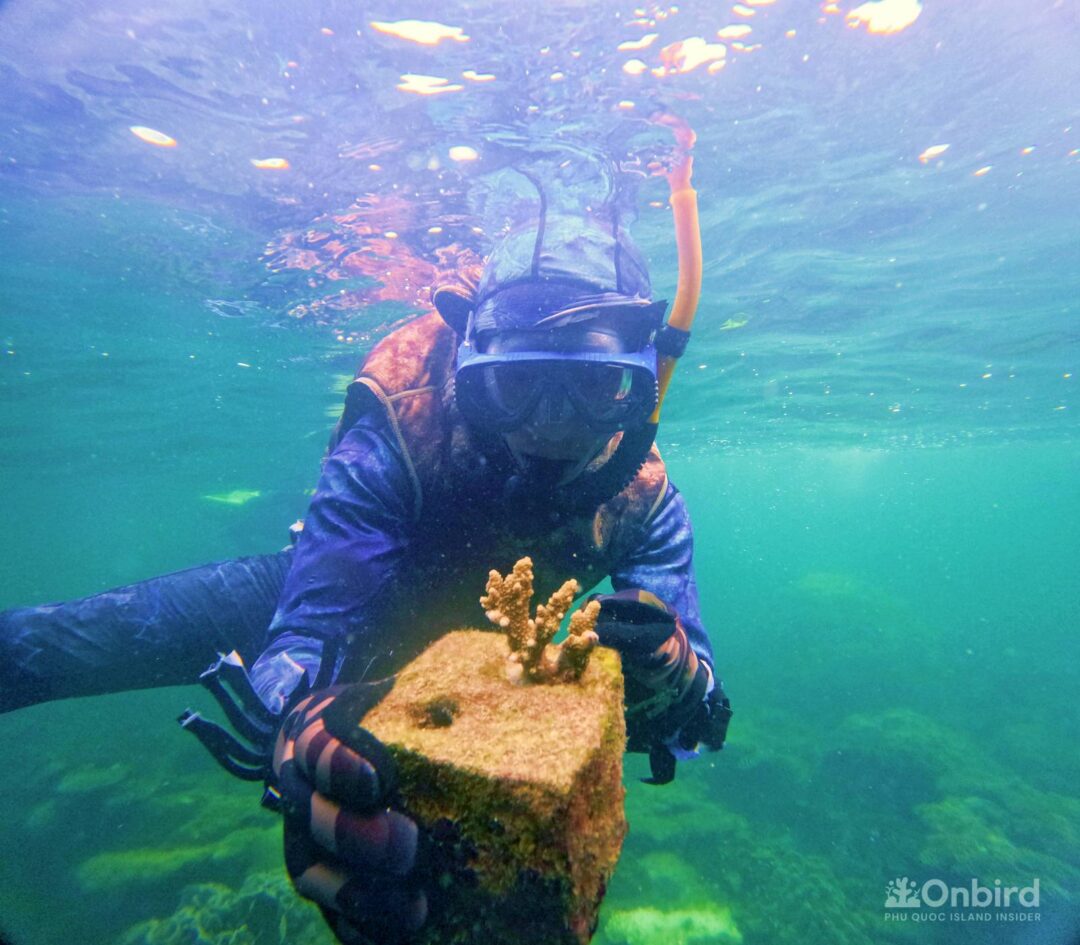Coral is not a single individual but a collection of tiny animals, they reproduce, develop and form large populations made up of hundreds of thousands of small individuals. Coral is divided into two types: Hard Coral and Soft Coral, in this article OnBird Phu Quoc will clarify with you some of the main differences between these two groups of coral with 3 main differences.
In the world, coral is divided into 2 types: the type that plays the role of creating reefs has the scientific name Hermatypic and the remaining type of non-reef-forming coral has the scientific name Ahermatypic.
MAIN CONTENTS
1. Differences In Coral Skeletons
Hard corals, also known as scleractinian corals and stony corals, are corals with a hard skeleton made of calcium carbonate (CaCO3) in a crystalline form called aragonite. This skeleton helps hard corals withstand strong waves, predators, and sunlight. Hard corals act as the main reef-building corals for the entire reef, meaning they grow in height, width, and coverage, creating foundations and pillars for other corals to grow on (e.g. ỵ corals) and they form underwater wave shields, accounting for up to 97% of the reef, soft corals only account for 1-3%.
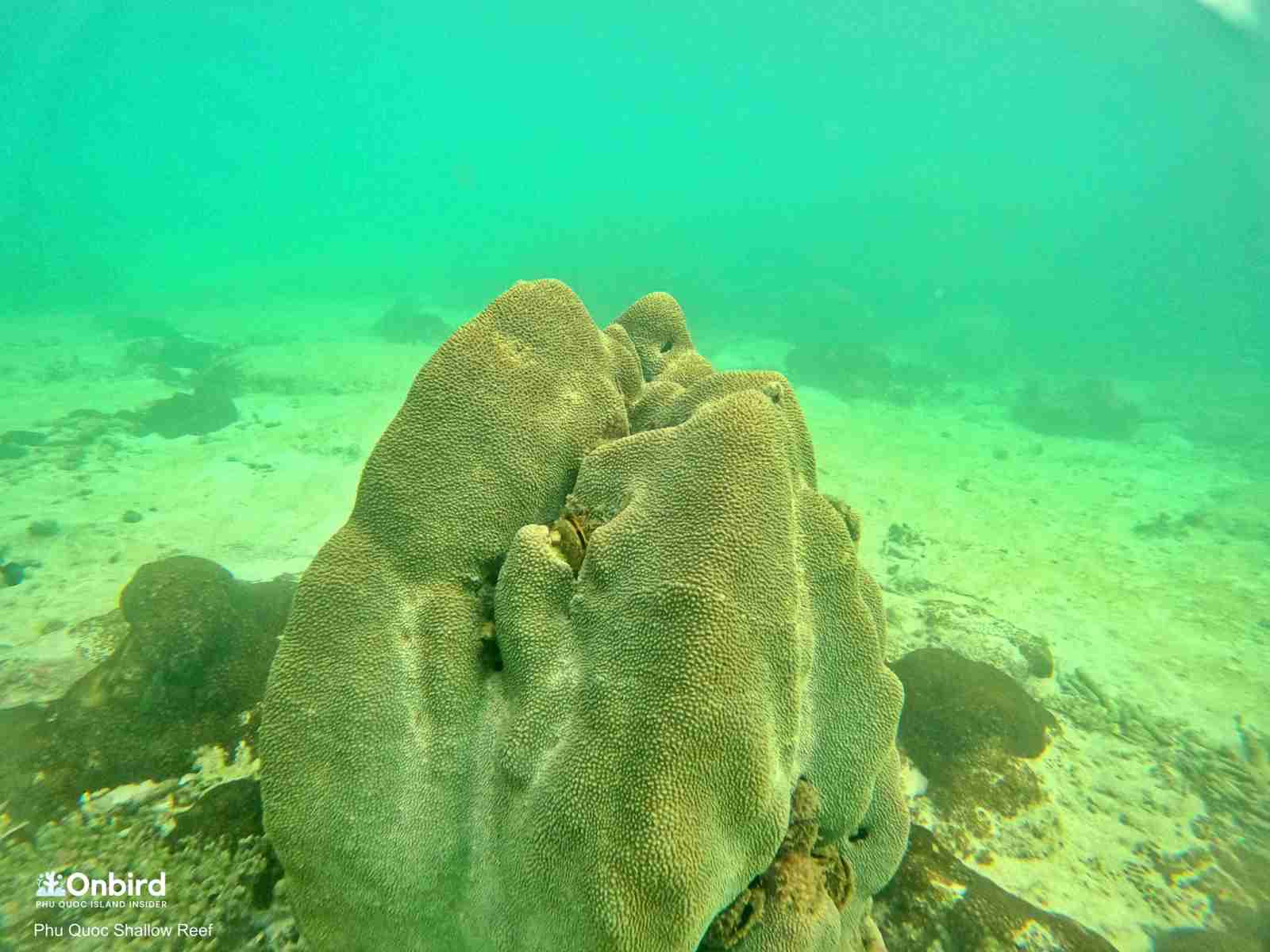
Hard coral colonies are made up of hundreds of millions of individual corals called coral polyps (with tiny stingers), which are held together by a calcium carbonate ‘skeleton’ that they secrete.
In contrast to hard corals, soft corals, also known as Alcyonacea and also a group of non-reef-building corals (Ahermatypic), do not have hard skeletons like hard corals because calcium carbonate makes up only a very small part of their skeletons. Soft corals are soft-bodied structures that resemble trees, bushes, fans, whips or grasses and are also aggregates of thousands of individual corals (Coral polyps). They swing in the water rather than being rigid like hard corals.
2. Food Sources Of Hard Corals Are Different From Soft Corals
The food sources of the two types of coral are also different, hard corals rely up to 80% on the nutrients provided by symbiotic algae, they feed passively during the day and only really feed actively by extending their stingers: coral polyps extend out of coral cups (Corallite) to catch plankton drifting in the water at night.
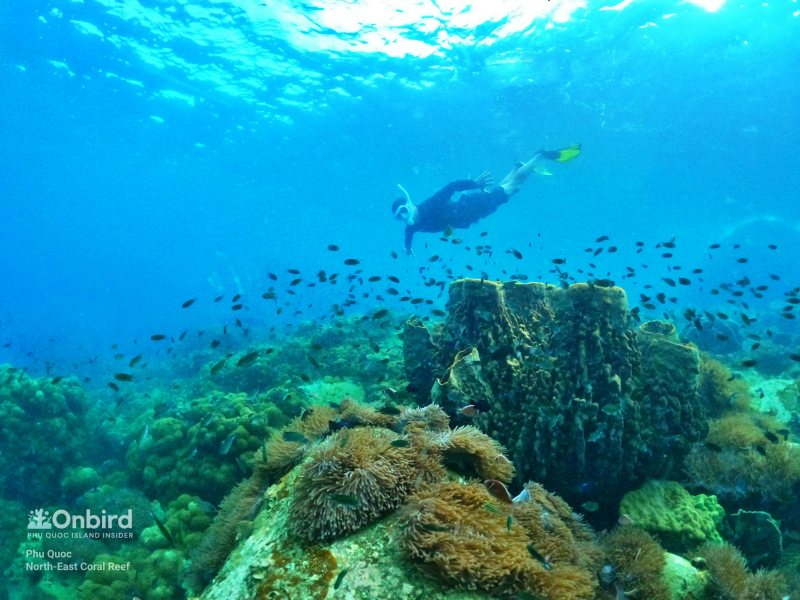
Meanwhile, soft corals depend almost entirely on catching plankton in the water to grow, they do not rely much on photosynthetic algae, so it is very difficult to find soft coral populations in calm waters with little current, because corals almost do not actively move, soft corals stand still in one place and wait for water currents to bring plankton to them, so soft coral populations often thrive, mainly in areas with currents.
3. Different Living Environment
Feeding methods and food sources determine the differences in habitats between the two groups of soft and hard corals.

Hard corals rely on the photosynthesis of symbiotic zoo algae to grow, they prefer to live in shallow, well-lit, clear water to easily access light sources, their hard skeleton made of calcium carbonate helps protect coral polyps from the sun’s radiation, hard corals cannot shrink their skeletons like soft corals, coral polyps can only withdraw into the coral cup to protect them. Hard corals will have difficulty growing in dark, deep water, so from a depth of 8m onwards you will encounter very few hard coral populations.
Soft corals have fragile skeletons, not as strong as hard corals, they have a contraction mechanism to protect themselves from solar radiation, they do not like light, and feed on a large amount of plankton in the water, so typical soft corals such as Carnation coral are usually only found in waters hidden from direct sunlight, at a depth of 5-12m and in areas with frequent strong currents, helping to provide abundant food sources and support the process of branching or shedding their branches.
4. CORAL PLANTING EXPERIENCE IN PHU QUOC
This is a hands-on experience of coral transplantation with the purpose of educating and regenerating coral reefs from broken coral fragments or from coral nurseries. With the desire to convey environmental messages, knowledge and understanding of corals, OnBird Phu Quoc has put into operation the first hands-on experience of coral transplantation in Phu Quoc and Vietnam so that travelers can better understand and appreciate our marine and coral ecosystems.
OnBird develops a number of coral transplantation techniques that are highly sustainable and effective for the environment and ecosystem. Through this experience, visitors contribute to the regeneration of some degraded coral reefs in the waters of Phu Quoc, Vietnam.
[REEF BUILDER 2] The Working Snorkeling Trip: Rebuild Coral Reef On Shore (Max 9-10 PAX)
[REEF BUILDER 1] The Working Snorkeling Trip: Rebuild Coral Reef (Max 9-10 PAX)



 日本語
日本語 中文
中文 한국어
한국어 Tiếng Việt
Tiếng Việt